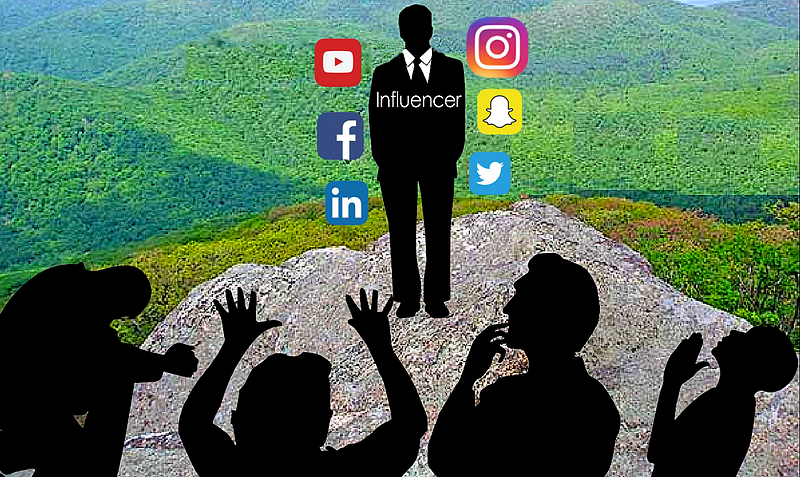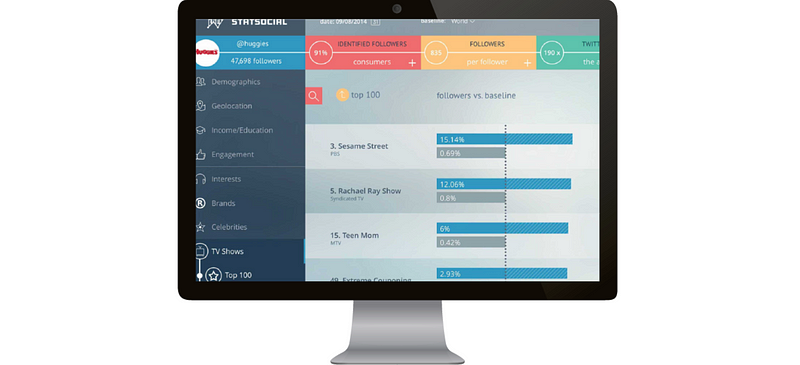StatSocial: To Know Your Influencers, Know Their Audiences
StatSocial: To Know Your Influencers, Know Their Audiences

Influencer marketing, was the advertising and P.R. buzz-phrase of 2017. Here we are more than halfway through 2018 and the practice has only been growing and evolving, showing no sign of abating. Demonstrable success stories — where the right influencer met the right brand — got the ball rolling, and marketers and the very best agencies and influencer platforms, have been growing ever-more imaginative since. While a long-teased notion, one of the key codes to the internet’s long-promised marketing potential has been cracked.
If you are a brand — whether long-established or a newborn startup — and you are seeking to enter the influencer marketing arena, before throwing your lot in with any influencer marketing agency, be certain they’re using StatSocial . Similarly, before employing any influencer platform or app to guide you to the most fruitful partnership, remember that if StatSocial ’ s insights aren’t being incorporated into how the platform researches potential influencers, then you’ll be adding an element of guesswork and risk into the venture where one needn’t exist.
Echoing the sentiments expressed by countless celebrities, during countless awards show acceptance speeches, an influencer is nothing without his or her audience. StatSocial , our online audience insights platform, dives in deep with any type of audience you can imagine existing online. From the large-scale, such as the audience of a specific influencer, to the more granular, like the portion of that influencer’s audience who are female, between ages 18 to 34, from Kalamazoo, whose favorite TV show is ‘Orange is the New Black,’ who eat Breyer’s Ice Cream , and who are fans of the Miami Dolphins .
That last example is likely not a segment of many, possibly most influencers’ audiences, but if it is we can tell you everything about it.
Anyone employing our platform will have at their disposal the likes, leanings, loyalties, and personalities — and the proportions of each, and how those compare to the proportions of the same predilections and affinities among all online users — for the audience of every influencer in the game. Not only are StatSocial ’ s insights essential for fully gauging just how influential any online presence is, knowing who it is they’re influencing is a crucial ingredient when making certain the right influencer meets the right brand.
Influencer Marketing Isn’t Going Anywhere
While influencer marketing strategies have been employed in ways both overt and discreet since the ’90s (federal regulation has seen to it to that the latter is, theoretically, no longer an option), it’s important to remember we’re living in a time where the stakes are much higher. While back nearly 20 years ago, or more, the sites of some names long forgotten to time (hello Jennifer Ringley and Harry Knowles) were receiving traffic numbers that would be considered dazzling even by today’s standards, the audiences in question were decidedly niche.
If you had a tech or genre entertainment product to promote (this was, after-all, before genre entertainment simply became entertainment), a large segment of your target audience was already gathered in cyberspace. It took the bubble burst, and the subsequent birth of the “user generated content” model — what they once called Web 2.0 — to bring the, pardon our jargon, “non-nerds” online with the same fervor found in those who may have been susceptible to the influence of what would have, in the ’90s, likely been defined as “internet celebrities.”
Of the user generated content model’s biggest success stories, YouTube was probably the most singularly game-changing. The site was launched in 2005, and purchased by Google for $1 billion in 2006.
In 2007, a 25-year old who went by the name of Tay Zonday “broke the internet” when a video he’d uploaded of one of his original songs, “ Chocolate Rain ,” went explosively viral (having been viewed over 125 million times to date). With a bit of proto-influencer marketing savvy, and a campaign that didn’t look all that different from some of the influencer-based initiatives that have popped up in the past couple of years, Dr. Pepper tapped Zonday to repurpose his memetic masterpiece, all for the purposes of promoting their then brand new Cherry Chocolate Dr. Pepper . While with 15 million views, it wasn’t a patch on the success of the phenomenon that inspired it, we’ve little doubt that all involved were quite pleased with the results.
A couple of months ago, CNN.com ran a “ Where are They Now?” type piece on both Zonday, and 2011 YouTube meme-sensation, Rebecca Black . In the interview, Zonday (real name, Adam Nyerere Bahner), astutely observed, “ In 2007, the internet was a novelty economy, and now it’s a loyalty economy.”
These days young people, long a highly desirable demographic to countless brands, largely engage with entertainment, news, and celebrity via Instagram, YouTube , Tumblr, and Twitter as much if not more than they do through TV and movies. Studies have shown that despite PewDiePie and Markiplier being multi-millionaires, and likely more famous than many of those starring on the major network’s current primetime schedules, young people are considerably more receptive to endorsements made by YouTube personalities than they are to those coming from the mouths of so-called “mainstream celebrities.”
‘South Park’ did an episode featuring PewDiePie and Jerry Seinfeld featured YouTuber Colleen Ballinger, in her ‘Miranda Sings’ alter-ego, on his ‘Comedians in Cars Getting Coffee.’ Each did so to, in part, make the point that — no matter how much traditional showbiz would like to pretend otherwise —these are mainstream celebrities. There you have a Boomer and a pair of Gen-X-ers, acknowledging the brave new world of which many of their generations are unaware.
Boomers and Gen-X-ers are active online to huge degrees also, though, and have been for some time. Indeed, they invented most of this stuff. They are by no means beyond the reach of an influencer, nor are they out of virtual earshot from a vast many. StatSocial audience insights are deployed through agencies and influencer marketing platforms to help guide marketers to a diversified array of influencers across all platforms, so — if appropriate for your brand — no generational stone should ever be left unturned.
How well do you know your own audience?

Do you know who your brand’s current fans are? Those agencies and influencer marketing platforms that use StatSocial surely will. You and they can then, armed with this fundamental knowledge, set about expanding your audience, seeking out influencers who appeal to a more diverse swath of humanity than those who are currently displaying an affinity for your brand. Or perhaps it may behoove your brand to double-down and really shoot for dominating the marketplace among the type of audience you’re already attracting.
Before weighing any options or formulating any strategy you have to know what you’re starting with. Only those influencer marketing agencies and platforms providing guidance informed by what only StatSocial c an show them c an in turn tell a brand what their best choices are.
If you were seeking to advertise on network TV would you work with an agency who not only didn’t integrate Nielsen ’s insights into their choices, but never even consulted them? Of course not, as they would be lacking all sorts of necessary information about each network’s viewing audience, and the audience of each program. They would know nothing of an audience’s income, nor the ages of the other TV viewers in their household. They wouldn’t even know where the various viewers of a program were located. Perhaps more alarmingly, you’d be spending money on the expertise of an ad agency who also didn’t know what other programs a certain show’s audience viewed, what products they purchased, how much they made annually, and so on. Those influencer marketing agencies and platforms who use StatSocial have at their fingertips insights every bit as essential.
StatSocial Helps Influencer Marketing Agencies and Platforms in Separating the Wheat from the Chaff
For a long while now, since long before the start of this decade when the buzzword influencer became common parlance, the digital sector has been glutted with would-be experts, gurus, ninjas, rock stars, disruptors, and, well, you get the idea.

Success and failure in the online realm can be very difficult to measure without StatSocial . A tool with insights that will let influencer marketing agencies know when an influencer is connecting, but will also aid them in ruling numerous influencers out right away.
StatSocial is not a tool for weeding out the “bad guys.” Our platform reports statistics. It is impartial. What it helps influencer marketing agencies and platforms to do is tune in the signal and block out the noise. Influencers that would be great for many brands may not be right for you.
For some brands, the “would-be guru” might indeed be the right influencer. It’s a complicated world. After all an influencer inflating their stats or gaming a social media platform, or any other pertinent metrics, would have little impact on the agency or influencer platform that uses StatSocial ’s insights. You can’t game StatSocial .
To learn more or request a demo, click here .